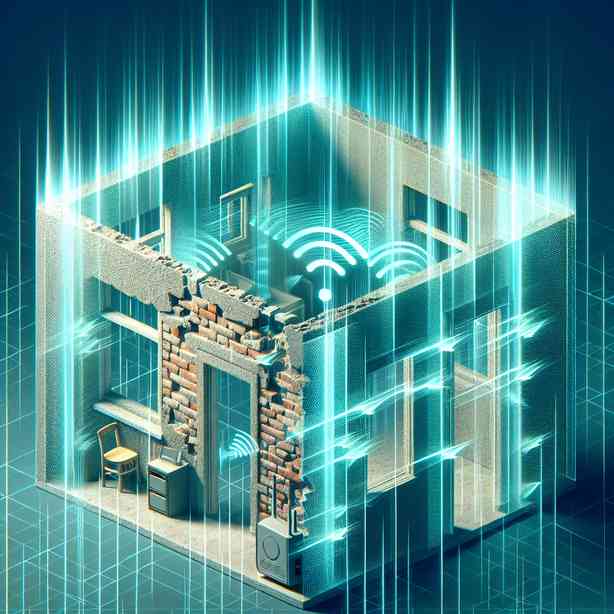
Wi-Fi technology has revolutionized the way we connect to the internet, making it possible for us to access online resources without the constraints of wired connections. However, many people wonder about the effectiveness of Wi-Fi signals when they have to travel through walls. Understanding how Wi-Fi signals behave in different environments can help us optimize our internet connectivity at home or in the office.
First, it’s essential to comprehend what Wi-Fi signals are and how they work. Wi-Fi operates using radio waves, which are a type of electromagnetic radiation. These radio waves are transmitted by a router and received by Wi-Fi-enabled devices, such as smartphones, computers, and smart home gadgets. The efficiency and strength of these signals can vary greatly depending on several factors, including distance, frequency bands, and physical obstacles, such as walls.
When Wi-Fi signals encounter barriers like walls, furniture, and other structural obstacles, their strength and reliability can be significantly affected. Walls, in particular, can impose substantial attenuation on the signal. Different materials used in construction can also influence how much the signal is diminished. For example, drywall, wood, and glass tend to allow Wi-Fi signals to pass through more easily than concrete, brick, or metal. This variation is an important consideration for anyone looking to optimize their Wi-Fi coverage.
Moreover, the frequency band used by your Wi-Fi connection can greatly influence its ability to penetrate walls. Wi-Fi operates primarily on two frequency bands: 2.4 GHz and 5 GHz. The 2.4 GHz band generally offers better range and can penetrate walls more effectively due to its longer wavelengths. However, it is also more susceptible to interference from other devices, such as microwaves and Bluetooth devices. On the other hand, the 5 GHz band provides faster data rates and higher capacity but is less effective at penetrating walls due to its shorter wavelengths. Therefore, when setting up your Wi-Fi network, it’s crucial to consider which frequency band aligns best with your coverage needs and environment.
In addition to the physical properties of walls and the frequency bands, the distance from the router plays a critical role in Wi-Fi signal strength. The further away a device is from the router, the weaker the signal will be. This declining signal strength can lead to reduced internet speeds and, in some cases, complete loss of connectivity. Therefore, it is advisable to position your router strategically in your home or office to maximize coverage and minimize dead zones.
To assess the quality of your Wi-Fi coverage, several tools and apps can help you measure signal strength in different areas. These applications can provide valuable insights into where Wi-Fi signals are strong and where they might be diminished due to walls and other obstructions. By identifying weak spots, you can make informed decisions about where to place your router or whether you need additional equipment, such as Wi-Fi extenders or mesh networks, to improve coverage.
A mesh network can be particularly beneficial in larger homes or spaces with multiple walls and obstacles. Unlike traditional routers, mesh Wi-Fi systems use multiple access points spread throughout the area to create a single, seamless network. This setup not only enhances coverage but also ensures that signals are strong in areas where a standard router may struggle.
Even with advancements in technology, it is crucial to acknowledge that Wi-Fi signals will always experience some level of degradation as they pass through walls. Understanding this limitation can help you manage your expectations and make informed choices about your internet configuration. While technological developments, such as beamforming and MU-MIMO (Multi-User, Multiple Input, Multiple Output), are helping enhance Wi-Fi performance, the challenges posed by physical barriers remain a consideration.
Finally, maintaining a clean and clutter-free environment can also positively impact Wi-Fi performance. Removing unnecessary obstacles, such as large furniture or decorative items, can help minimize interference and improve the clarity of the signal. Additionally, keeping the router elevated and away from electronic devices can further enhance the quality of your Wi-Fi experience.
In summary, while Wi-Fi signals can penetrate walls to some extent, they often experience significant attenuation, which can affect overall connectivity. Understanding the dynamics of Wi-Fi technology, frequency bands, and the unique characteristics of your space will enable you to create a more effective and reliable internet environment. By strategically positioning your Wi-Fi equipment, leveraging mesh technology, and improving your surroundings, you can maximize your Wi-Fi coverage and enjoy uninterrupted access to online resources.


